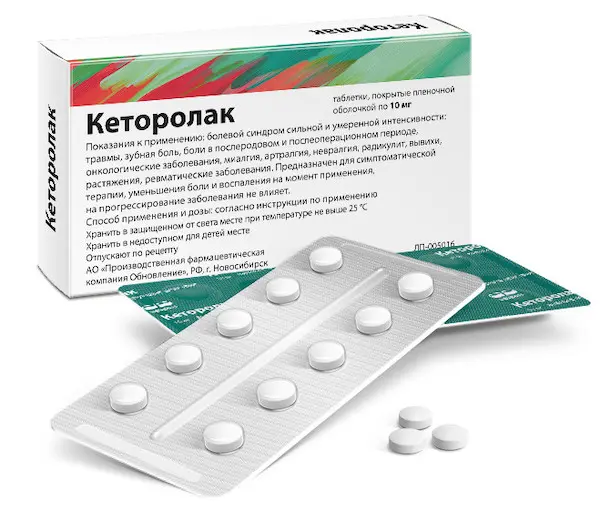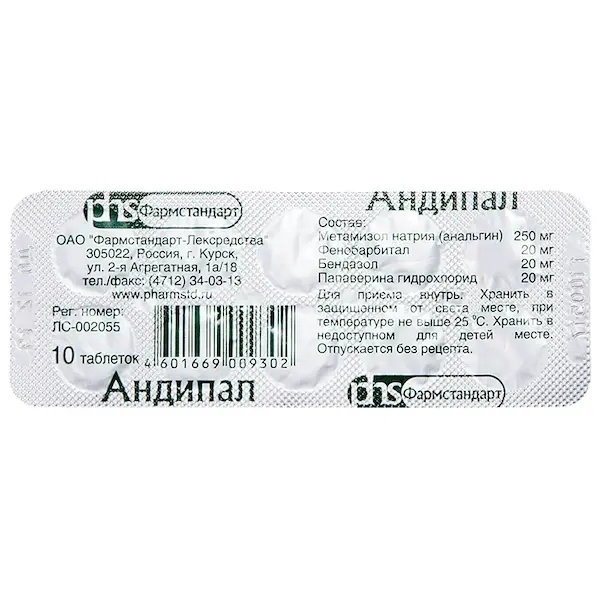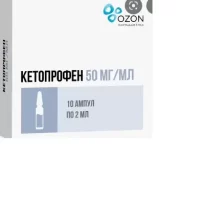Description
Ketorolac Pharmacodynamics
Ketorolac has a pronounced analgesic effect, also has anti-inflammatory and moderate antipyretic effects.
Its mechanism of action is related to non-selective inhibition of cyclooxygenase enzyme (COX-1 and COX-2) activity, mainly in peripheral tissues, which results in inhibition of prostaglandin biosynthesis – modulators of pain sensitivity, thermoregulation and inflammation. Ketorolac is a racemic mixture of -S and +R enantiomers, and the analgesic effect is due to the -S form.
Ketorolac does not affect opioid receptors, does not depress respiration, does not cause drug dependence, and has no sedative or anxiolytic effect.
The analgesic effect is comparable with morphine and is significantly superior to NSAIDs. After oral administration, the onset of analgesic effect is observed after 1 hour, the maximum effect is achieved after 1-2 hours.
Indications
Pain syndrome of severe and moderate intensity:
– injuries;
– toothache;
– Pain in the postpartum and post-operative period;
– cancer;
– myalgia;
– arthralgia;
– neuralgia;
– sciatica;
– sprains, strains;
– rheumatic diseases.
Designed for symptomatic therapy, reduction of pain and inflammation at the time of use, does not affect the progression of the disease.
Contraindications
Hypersensitivity (including to other nonsteroidal anti-inflammatory drugs); complete or incomplete combination of bronchial asthma, recurrent polyposis of the nose and sinuses and intolerance to acetylsalicylic acid or other nonsteroidal anti-inflammatory drugs (including history); erosive-ulcerative lesions of the gastrointestinal tract (GIT), active gastrointestinal bleeding; inflammatory bowel disease (including ulcerative colitis, Crohn’s disease); bone marrow and blood disorders (leukopenia, including a history, thrombocytopenia, hypocoagulation (including hemophilia)), myelosuppression, bleeding or high risk of developing; severe renal insufficiency (creatinine clearance (CK) less than 30 ml/min), confirmed hyperkalemia; severe hepatic insufficiency or active liver disease; conditions after coronary artery bypass grafting; prophylactic anesthesia before and during major surgical interventions due to high risk of bleeding; active cerebrovascular disease (including intracranial hemorrhage or suspected); pregnancy; childbirth; breastfeeding; children under 16 years of age (safety and effectiveness of use have not been established); concomitant use with probenecid; concomitant use with pentoxifylline; concomitant use with acetylsalicylic acid and other nonsteroidal anti-inflammatory drugs (including cyclooxygenase-2 inhibitors); concomitant use with lithium salts; concomitant use with anticoagulants (including warfarin and heparin).
Dosage and administration
- Orally, once or repeatedly, depending on the severity of the pain syndrome.
- A single dose of 10 mg (1 tablet), while repeated administration is recommended to take 10 mg up to 4 times a day, depending on the severity of pain.
- The maximum daily dose should not exceed 40 mg.
- Course duration should not exceed 5 days.
- To reduce the risk of adverse events, the minimum effective dose of ketorolac should be used for the shortest possible course.





